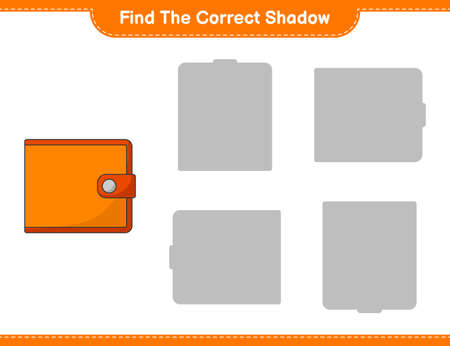Introduction to Modular Kitchens in Indian Homes
Modular kitchens have become a staple in modern Indian households, especially among urban families who value both style and functionality. With rapid urbanisation and changing lifestyles, the demand for efficient kitchen spaces has soared across cities like Mumbai, Bengaluru, and Delhi. But what makes modular kitchens so popular? It’s not just about sleek looks or Instagram-worthy designs—these kitchens cater directly to the needs of Indian-style cooking, which often involves heavy-duty appliances, vibrant spices, and plenty of storage for utensils and groceries. Choosing the right layout—whether U-shaped or L-shaped—can make all the difference in your daily cooking experience. The configuration you select influences everything: movement flow, storage accessibility, aesthetic appeal, and how seamlessly you can whip up everything from tadka dal to festive biryanis. In the sections ahead, we’ll explore why planning your modular kitchen’s layout matters as much as the finishes or colours you choose—and how this decision shapes the heart of your home.
2. Understanding the U-Shaped Modular Kitchen
When it comes to designing a modular kitchen that blends functionality with contemporary aesthetics, the U-shaped layout stands out, particularly for spacious Indian flats and independent bungalows. Let’s break down the essential design principles, distinct advantages, and typical scenarios where a U-shaped modular kitchen becomes an ideal choice for Indian homes.
Design Principles of U-Shaped Kitchens
The U-shaped modular kitchen is characterised by three adjoining walls of cabinetry and countertops, forming a “U” configuration. This setup provides a seamless workflow, allowing you to move efficiently between the cooking zone, cleaning area, and storage spaces—a concept fondly referred to as the “work triangle” in interior design circles across India.
| Design Aspect | Description |
|---|---|
| Layout Structure | Three continuous counters on adjacent sides, creating a closed circuit |
| Work Triangle | Optimised movement between hob (stove), sink, and refrigerator |
| Space Utilisation | Maximises countertop and storage space—ideal for joint families or passionate home chefs |
| Zoning Possibilities | Clearly defined sections for prep, cooking, cleaning, and storage; can include a breakfast counter in larger kitchens |
Advantages of U-Shaped Modular Kitchens in Indian Homes
- Ample Storage: With cabinets on three sides, there’s generous room for storing masalas, pressure cookers, and large utensils commonly used in Indian cooking.
- Efficient Workflow: The ergonomic design ensures that all essential stations are within easy reach—perfect for multitasking during elaborate festive preparations or daily family meals.
- Multiple Users: Spacious enough to accommodate more than one person at a time—be it joint families or when you have help from your maid (bai).
- Scope for Personalisation: You can include tall units for grains (atta, rice), pull-out spice racks for quick tadka, or even incorporate pooja shelf corners—a thoughtful touch reflecting Indian traditions.
- Natural Light & Ventilation: If your kitchen overlooks a balcony or service area, this layout allows ample window space on the fourth wall for sunlight and ventilation—essential while frying pakoras or making tadka!
Typical Use Cases: Is U-Shaped Kitchen Right for You?
| Suits Best For | Description/Examples from Indian Context |
|---|---|
| Large Flats & Independent Houses | Bungalows in Bengaluru or spacious apartments in Mumbai suburbs benefit from this layout due to available square footage. |
| Joint Families & Frequent Entertainers | If you regularly prepare elaborate meals for extended family gatherings or festivals like Diwali and Pongal. |
| Culinary Enthusiasts & Bakers | Avid bakers or home chefs who need multiple work zones—kneading dough on one side while prepping veggies on another. |
| Kitchens with Service Areas/Balconies Attached | The open side can face a service balcony; perfect for keeping heavy-duty tasks like washing dishes away from main cooking areas. |
Aesthetics & Local Customisation Tips
The U-shaped modular kitchen easily adapts to various design themes—be it glossy acrylic finishes inspired by Mumbai’s high-rises or traditional wooden textures popular in South India. Consider adding patterned tiles (like Jaipur blue pottery) as backsplashes or brass handles for an ethnic vibe. For many urban Indian homes where vastu shastra matters, this layout also facilitates optimal placement of hob and sink as per directional beliefs.
Overall, if your home offers enough space and your cooking style demands efficiency with ample storage, the U-shaped modular kitchen is both a practical and stylish choice rooted in modern Indian living.
![]()
3. L-Shaped Modular Kitchens: A Perfect Fit for Indian Apartments
In the bustling heart of Indian cities, where space is always at a premium, the L-shaped modular kitchen emerges as an ingenious solution. This layout seamlessly tucks itself into the corner of any apartment, maximising every inch without compromising on style or function. For Indian households, where the rhythm of daily life often pivots around the kitchen, this design offers both adaptability and efficiency.
Practicality Meets Urban Living
The L-shaped configuration is tailor-made for compact city apartments—a common scenario in metros like Mumbai, Bengaluru, or Delhi NCR. By hugging two adjacent walls, it leaves ample open space for movement, making it easier to multitask during hectic mornings or festive meal preparations. Not only does it allow for an ergonomic work triangle between the stove, sink, and refrigerator, but it also ensures that more than one person can comfortably cook together—a must-have for joint families or when entertaining guests.
Adaptable to Traditional Indian Cooking
Indian cuisine is all about layers of flavours and diverse cooking techniques—think tadka, deep-frying pooris, grinding masalas, or rolling rotis. The L-shaped kitchen supports this beautifully by providing dedicated zones for prepping, cooking, and cleaning. You can easily incorporate a separate wet and dry area or even fit in a compact mandir for daily pooja. The natural division created by the L makes it simple to install essential appliances like chimneys to handle masala fumes or a corner pantry unit for storing grains and spices bought in bulk from your local kirana store.
Smart Storage & Open Spaces
With thoughtful modular cabinetry reaching up to the ceiling, L-shaped kitchens make storage a breeze—even in petite flats. Overhead shelves keep heavy utensils and pressure cookers out of sight but within reach, while pull-out drawers near the hob keep everyday masalas and spatulas handy. The open floor area can accommodate a small breakfast counter or even a portable dining table—perfect for those quick chai breaks or catching up with family as you prepare dinner.
For modern Indian apartments seeking a blend of tradition and contemporary design, the L-shaped modular kitchen stands out as both practical and aesthetically pleasing—a true ally in crafting wholesome meals and cherished memories.
4. Key Differences: U-Shaped vs L-Shaped Kitchens
When planning a modular kitchen in India, understanding the practical differences between U-shaped and L-shaped layouts is essential. Let’s compare both options based on space utilisation, storage efficiency, movement flow (especially the Indian-style work triangle), and family needs.
Space Utilisation
| Aspect | U-Shaped Kitchen | L-Shaped Kitchen |
|---|---|---|
| Best for | Medium to large spaces | Small to medium spaces |
| Open Layouts | Can feel enclosed if not planned well | More open, suitable for compact homes and apartments |
| Flexibility | Separate zones for prep, cooking, and cleaning | Flexible placement but limited counter space compared to U-shaped |
Storage Efficiency
The U-shaped kitchen provides maximum wall and under-counter storage—perfect for Indian households with many utensils, masalas, and gadgets. The L-shaped layout offers good storage but may require smart solutions like vertical cabinets or corner carousels to optimise every inch.
Movement Flow: The Indian-Style Work Triangle
| Aspect | U-Shaped Kitchen | L-Shaped Kitchen |
|---|---|---|
| Work Triangle Efficiency | Excellent; separate zones reduce crowding—ideal for multitasking (e.g., chapati rolling & tadka simultaneously) | Good; may have longer walking distance between sink, hob, and fridge but easier for two people to work side-by-side in smaller kitchens |
| Family Involvement | Easier for multiple family members to help without bumping into each other—great for joint families or if you love hosting chai sessions! | Suits nuclear families or couples who prefer a less crowded space while cooking together |
Meeting Family Needs: Indian Context
If your family enjoys elaborate home-cooked meals with lots of ingredients (think dal tadka, biryani, dosas), a U-shaped kitchen can handle the hustle-bustle. It supports bulk storage (atta bins, big pressure cookers) and simultaneous cooking. For urban dwellers with smaller spaces or open plans, the L-shaped layout fits well—also supporting easy conversations with guests in the living room thanks to its open ends.
5. Factors to Consider Before Choosing for Your Indian Home
When it comes to selecting between a U-shaped or L-shaped modular kitchen, the decision is deeply rooted in how we live and cook in India. Let’s explore the most crucial factors that should guide your choice, blending both functional needs and cultural sensibilities.
Family Size & Social Dynamics
Indian homes are often bustling with multi-generational families or frequent guests. If you have a large joint family, a U-shaped kitchen offers ample counter space for multiple people to prepare meals simultaneously—think of those Sunday brunches or festive cooking marathons. For smaller nuclear families, an L-shaped layout may suffice, creating an open flow that connects the kitchen with the living or dining area, fostering togetherness during meal prep.
Cooking Habits Unique to Indian Cuisine
Our kitchens are more than just spaces—they’re temples of taste! Whether you’re rolling rotis on a tawa, tempering spices in hot oil, or storing an assortment of masalas, your layout should accommodate these rituals. A U-shape can provide dedicated zones: one for chopping veggies, another for frying, and a third for plating. L-shaped kitchens keep things simple but may require strategic organization to ensure your tawa stand, spice racks, and pressure cooker are always within arm’s reach.
Vastu Shastra Considerations
For many Indian homeowners, Vastu compliance is non-negotiable. The placement of the stove (Agni), sink (Jal), and refrigerator must respect Vastu principles—often influencing whether a U or L shape fits best. U-shaped kitchens allow better zoning for elements like fire and water; L-shaped layouts might need creative adjustments to align with Vastu rules.
Smart Appliance Placement
From mixer-grinders to microwave ovens and ever-essential rice cookers, Indian kitchens are gadget havens. In a U-shaped kitchen, each appliance can have its dedicated spot without crowding the workspace. The L-shaped design encourages minimalism but needs clever planning to avoid clutter—think tall units or corner carousels to maximize utility without sacrificing style.
Aesthetic Flow & Personal Preference
Your kitchen should mirror your personality as much as your culinary preferences. Do you prefer a cozy enclosure where every ingredient is within reach? Or does an open-plan vibe energize your cooking sessions? Visualize daily routines—and don’t forget the joy of serving chai across a counter!
The Bottom Line
The perfect modular kitchen isn’t just about shape—it’s about making room for your traditions, habits, and celebrations. Whether you lean towards U or L, let your space be as vibrant and welcoming as your favourite home-cooked meal.
6. Expert Tips for Making the Right Choice
Striking a Balance Between Style & Functionality
When choosing between U-shaped and L-shaped modular kitchens in India, it’s essential to look beyond just aesthetics. Top Indian designers recommend assessing your daily cooking habits, family size, and storage needs first. A U-shaped layout is perfect for joint families who love elaborate home-cooked meals, while an L-shape may suit nuclear families or those with open-plan living spaces. Remember, style should never come at the expense of practicality—ensure your kitchen supports both efficient workflow (the classic “work triangle”) and ample storage for masalas, dal containers, and utensils that are staples in Indian homes.
Smart Budgeting Tips from Local Experts
Budget plays a pivotal role in any modular kitchen project. Indian design consultants advise setting aside 10-15% of your total kitchen budget for unforeseen expenses like electrical points or last-minute upgrades to hardware. Consider investing in durable materials like marine plywood or high-grade laminates that can withstand humidity and heavy use common in Indian kitchens. Don’t forget to compare quotes from multiple local vendors, and always read reviews on their after-sales service.
Selecting Finishes That Suit Indian Tastes
The right finishes can bring out both personality and resilience in your kitchen. For Indian households where tadkas and curries are a daily affair, opt for easy-to-clean surfaces such as glossy laminates or acrylics. Warm wood textures or vibrant colours like mustard yellow, peacock blue, or deep maroons often resonate with Indian aesthetics—these add warmth without compromising sophistication. For countertops, granite remains a popular choice due to its durability and stain resistance.
Respecting Indian Sensibilities
Finally, integrate elements that reflect traditional Indian sensibilities within modern layouts. Consider a dedicated pooja shelf in a discreet corner, or extra niches for storing pressure cookers and spice boxes. Ventilation is non-negotiable—ensure there’s provision for chimneys or exhaust fans to tackle strong aromas typical of Indian cooking. Lighting is equally important; combine task lighting over work areas with ambient lighting to create a welcoming vibe that feels uniquely Indian.
In summary
Consult with local experts who understand the nuances of both design and culture. Their insights will help you navigate the U-shaped vs L-shaped decision thoughtfully—ensuring your modular kitchen embodies both contemporary flair and timeless Indian values.
7. Conclusion: Finding the Ideal Kitchen for Indian Lifestyles
Choosing between a U-shaped and L-shaped modular kitchen is more than just a design decision—it’s about embracing what truly fits your Indian way of living. Both layouts bring their own unique strengths to the table: the U-shape offers ample storage and workspace, ideal for joint families or enthusiastic home chefs, while the L-shape maximises open areas, supporting easy movement and accommodating smaller urban homes. As you reflect on these options, take a moment to consider your daily cooking rituals—do you prepare elaborate meals with multiple helpers or prefer quick solo breakfasts? Do you need room for traditional appliances like the wet grinder or tandoor, or do you desire a sleek breakfast counter for chai sessions? By weighing these practical details alongside aesthetics, you empower yourself to invest in a kitchen that not only looks stunning but also elevates your everyday experience. Remember, the heart of every Indian home is its kitchen—a space where flavours mingle, memories are created, and traditions thrive. Make your choice thoughtfully, and let your modular kitchen become a seamless extension of your lifestyle and personality.


